Patents
Automatic Cat Litter Box—Under Cat’s Control
I detect one small flaw in this concept, hidden in the phrase "the cat is trained..."Full patent here.
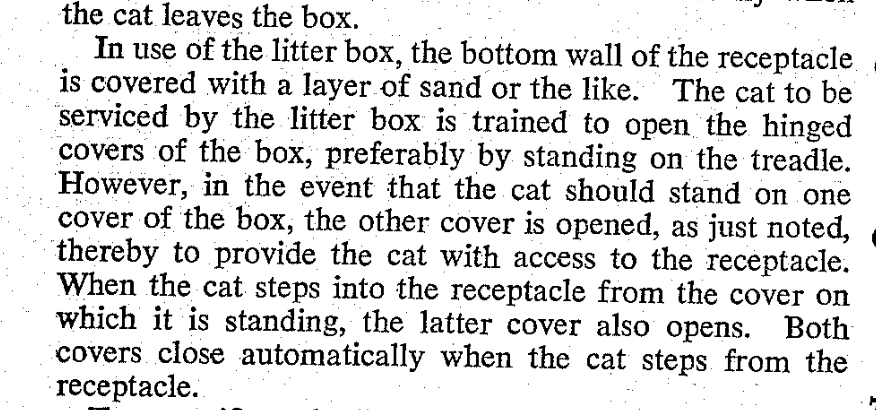
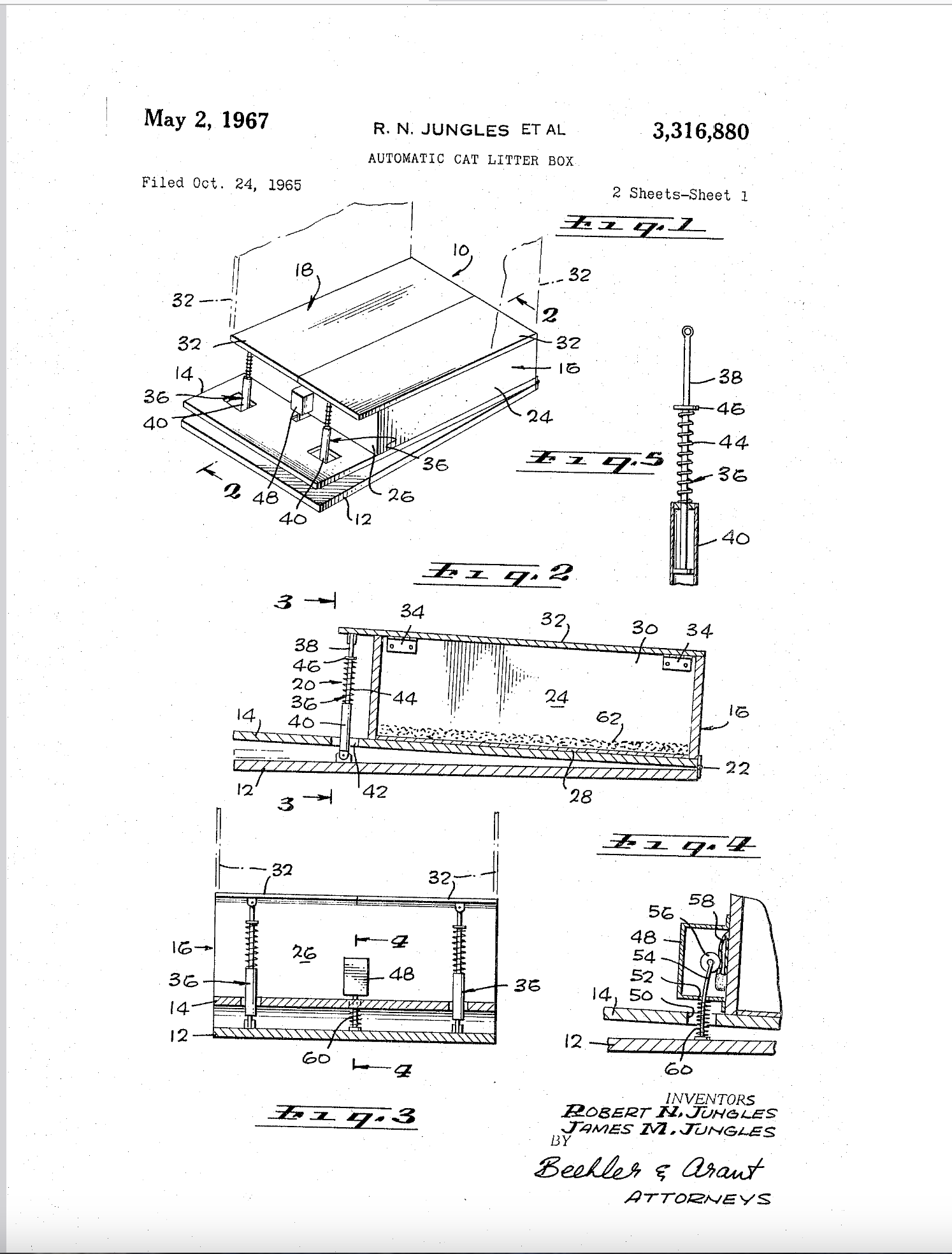
Posted By: Paul - Sun Sep 10, 2023 -
Comments (0)
Category: Patents, Excrement, Cats, 1960s
Clipboard Gun
The justification for this clipboard gun was that it would allow police officers to approach stopped vehicles looking as if they were holding a clipboard, not a gun.The problem that I see is that it wouldn't take long for the public to realize that the clipboards were actually guns. In which case, even if a police officer was genuinely only carrying a clipboard, everyone would assume it was a gun.
More info: Patent No. 4,016,666


Posted By: Alex - Tue Aug 29, 2023 -
Comments (2)
Category: Police and Other Law Enforcement, Patents, 1970s, Weapons
Anti-Bulbsnatcher Device
This post is partially a tribute to the end of the incandescent bulb, after its long and glorious reign.For many years, GE conducted an ad campaign to discourage people from moving lightbulbs around from one fixture to another in a lazy manner, instead of always having a closetful of replacement bulbs. If only GE had invested in the patent which follows these ads, for a device that would not allow a bulb to be unscrewed with breaking it.
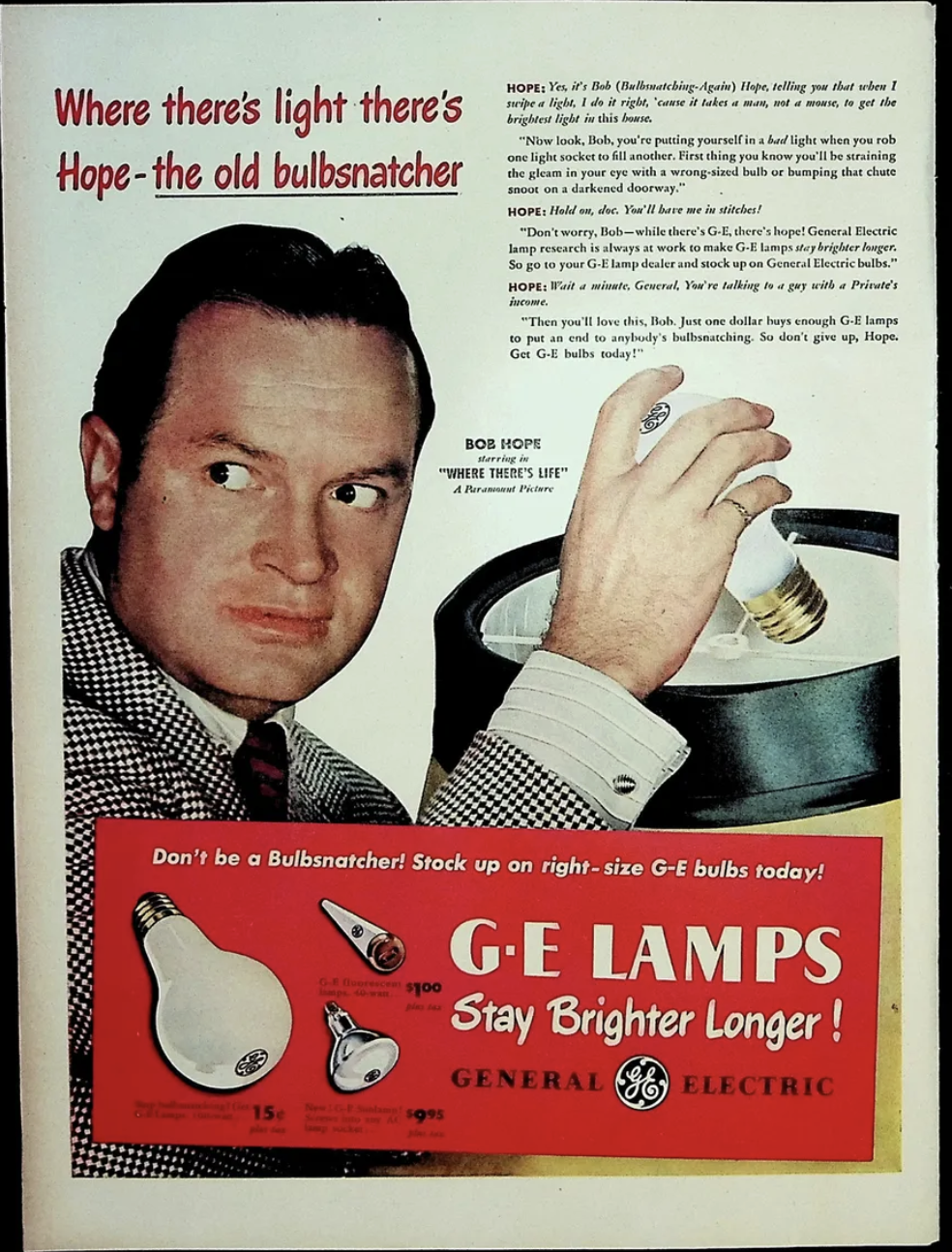
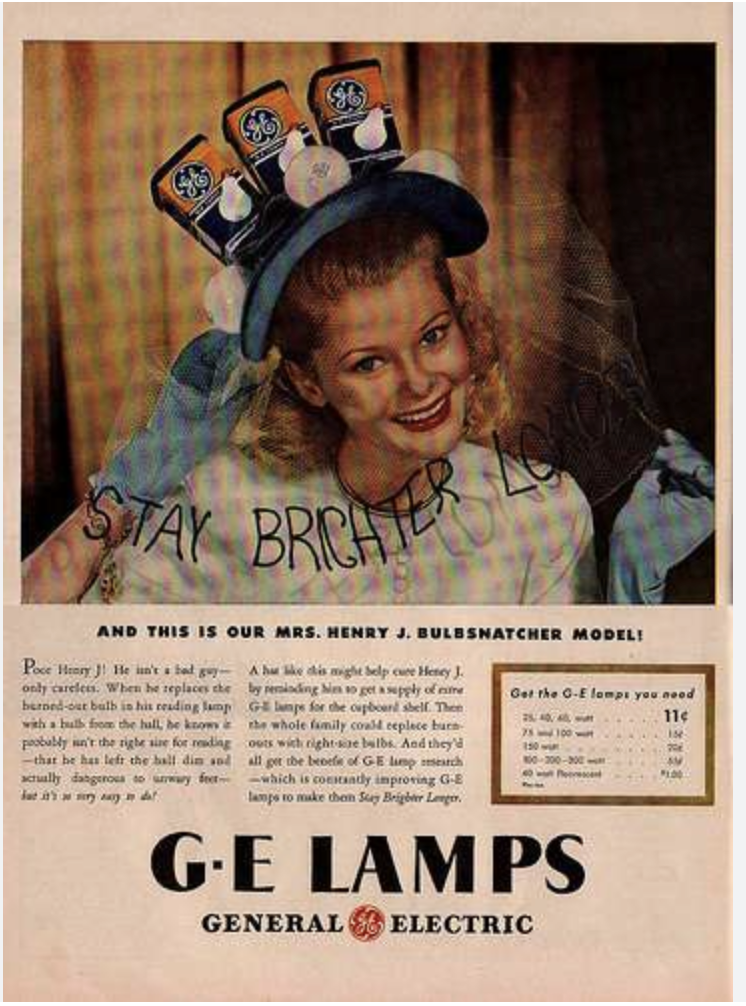
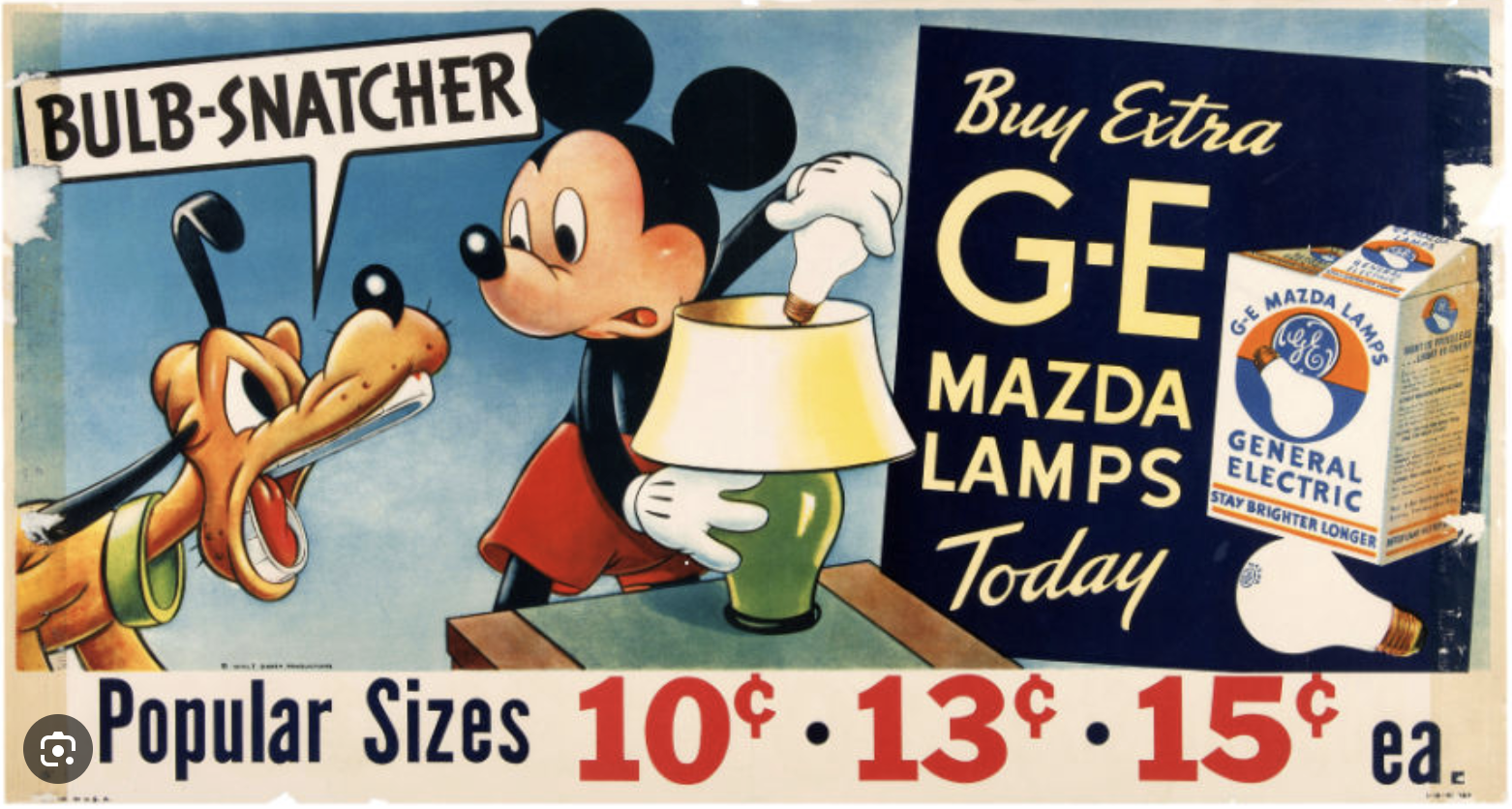
Full patent here.
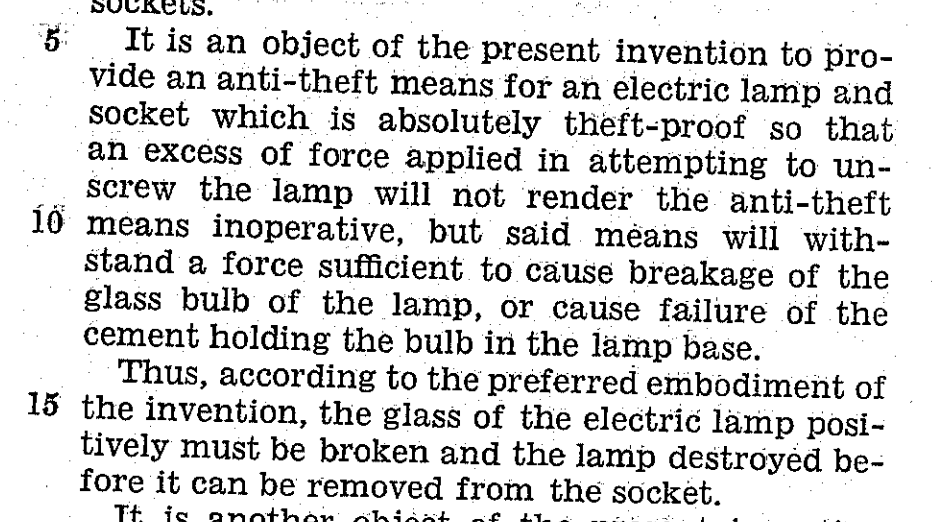
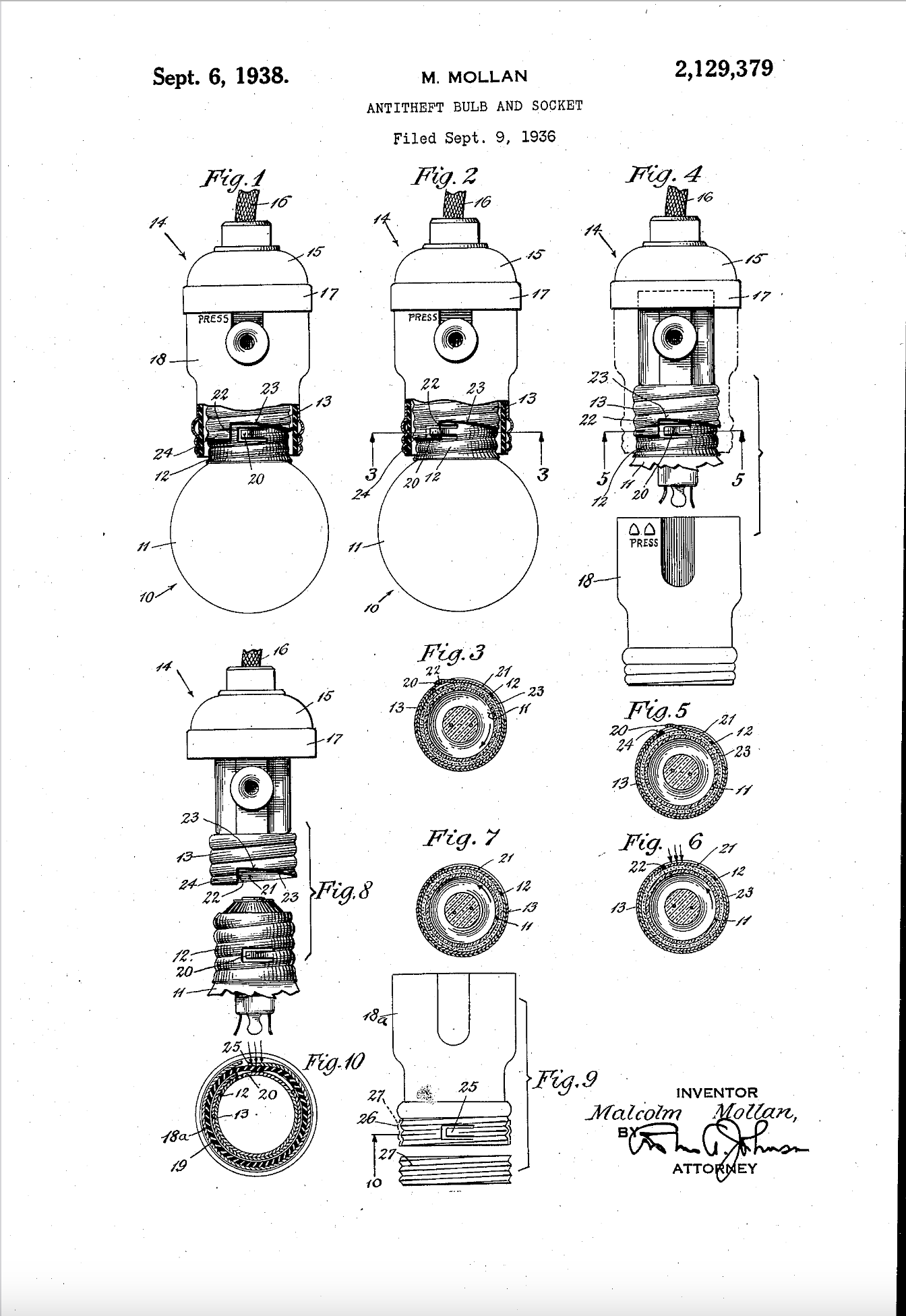
Posted By: Paul - Tue Aug 22, 2023 -
Comments (0)
Category: Domestic, Inventions, Patents, Technology, 1930s
Bank Robber Immobilizing Vestibule
So near as I can interpret this patent, in front of every bank teller's window is erected a revolving-door chamber. The customer--or robber--must enter the chamber, which revolves shut behind him. A good customer is allowed by the clerk's pressing of a switch to exit. The robber is held in place. What could go wrong?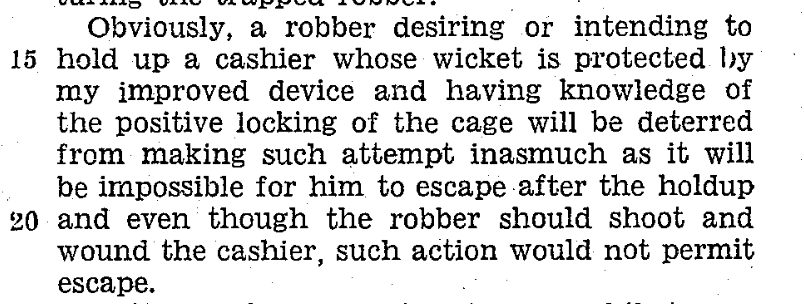
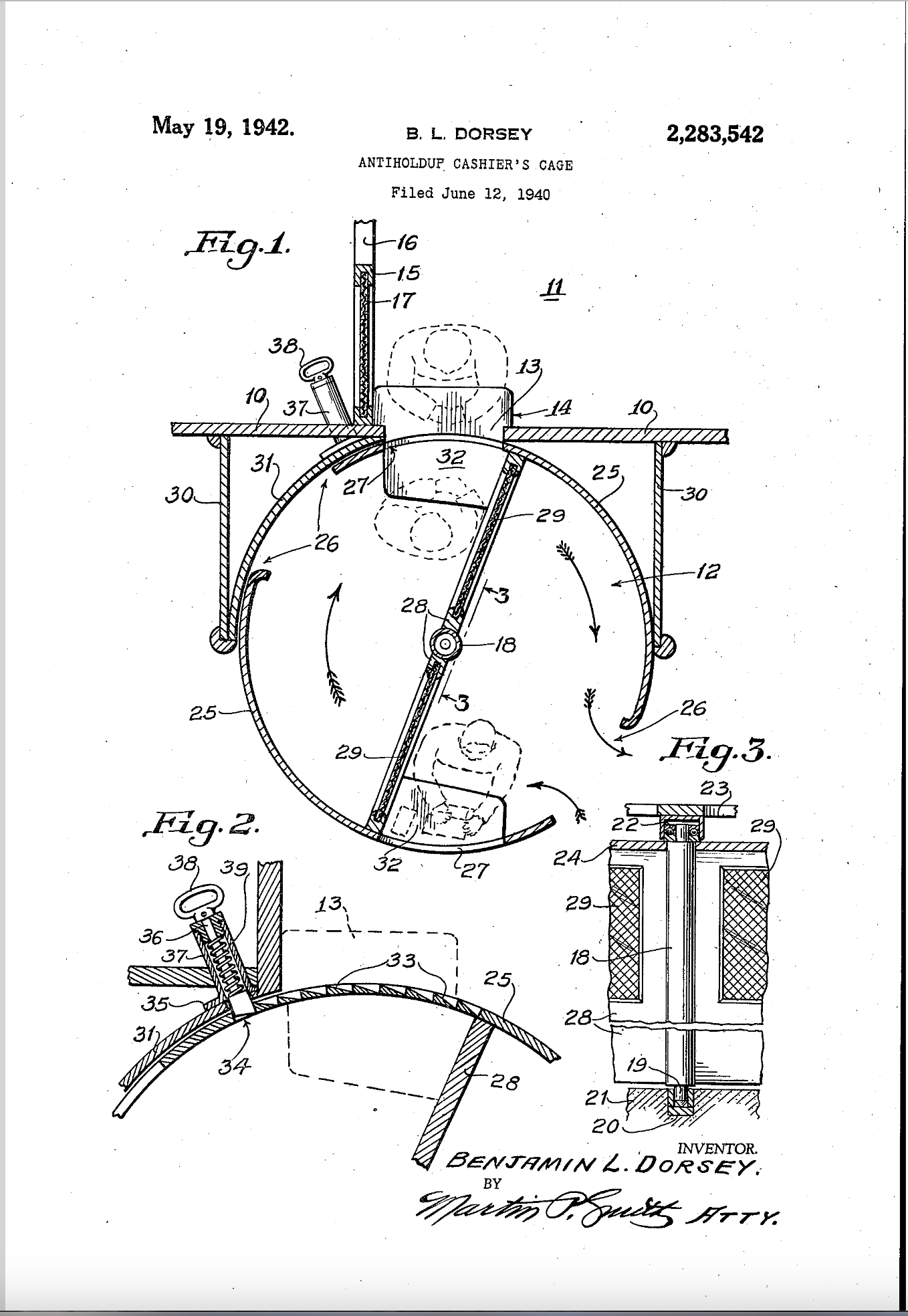
Posted By: Paul - Thu Aug 17, 2023 -
Comments (1)
Category: Crime, Inventions, Patents, Money, Innocent Bystanders, Passersby, Witnesses and Accidental Victims, 1940s
Sound-Activated Lingerie
The clapper, adapted for underwear. From the patent: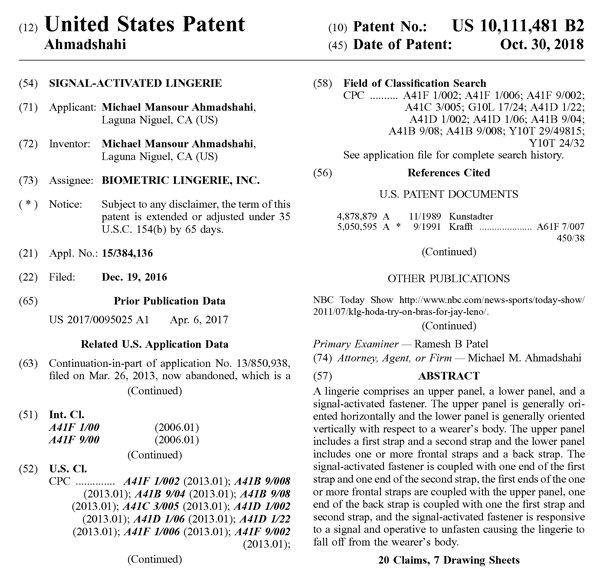
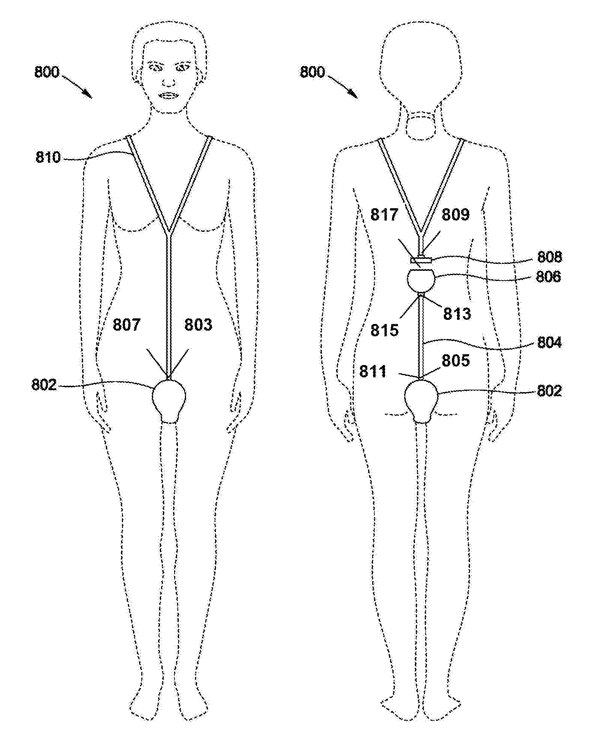
Posted By: Alex - Thu Jul 20, 2023 -
Comments (4)
Category: Patents, Underwear
An orthopedic appliance to produce permanent smiles
Patented by Josephine Rountree in 1926.I wouldn't call having this thing strapped to your face as "without inconvenience to the user."
Another object of the invention is to provide an appliance which will gradually train the muscles at the corners of the mouth into the position assumed by the act of smiling, without inconvenience to the user.

Posted By: Alex - Sun Jul 02, 2023 -
Comments (5)
Category: Beauty, Ugliness and Other Aesthetic Issues, Patents, 1920s
What does this measure?
This is obviously a measuring device of some kind. But what exactly does it measure? The answer is below in extended.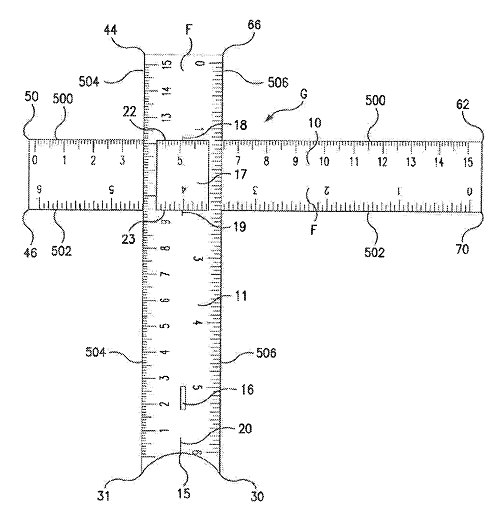
More in extended >>
Posted By: Alex - Wed Jun 14, 2023 -
Comments (3)
Category: Inventions, Patents, Instruments and Measuring Devices
The Date Hat
Edward Oliveira of Newport, Rhode Island was granted a patent (#2,749,555) in 1956 for a "date hat". His idea was that, by wearing the hat, a young woman could display whether she was available for a date on a specific day. From the patent:
I can see a problem with this concept. Would a young woman really want to publicly display that no one had asked her out?
Also, had Oliveira attempted to get dates by systematically asking out every girl in his school? Thus leading to his frustration that there was "not sufficient time to talk to every available girl to determine their date status."
Posted By: Alex - Thu Jun 01, 2023 -
Comments (3)
Category: Patents, Headgear, 1950s, Love & Romance
Bumper Bottle Opener
William Cowan didn't invent the bottle opener, but he did invent, and patent, a method for attaching a bottle opener to a car's bumper (Patent No. 2,674,141).I can see the potential use for camping or tailgate parties. But it still seems odd that this was patentable. After all, could one get a new patent for every different object a bottle opener could potentially be attached to?

Posted By: Alex - Sat May 20, 2023 -
Comments (1)
Category: Patents, 1950s, Cars
Body Exerciser
This looks like an excellent way to wreck your vertebrae.Full patent here.
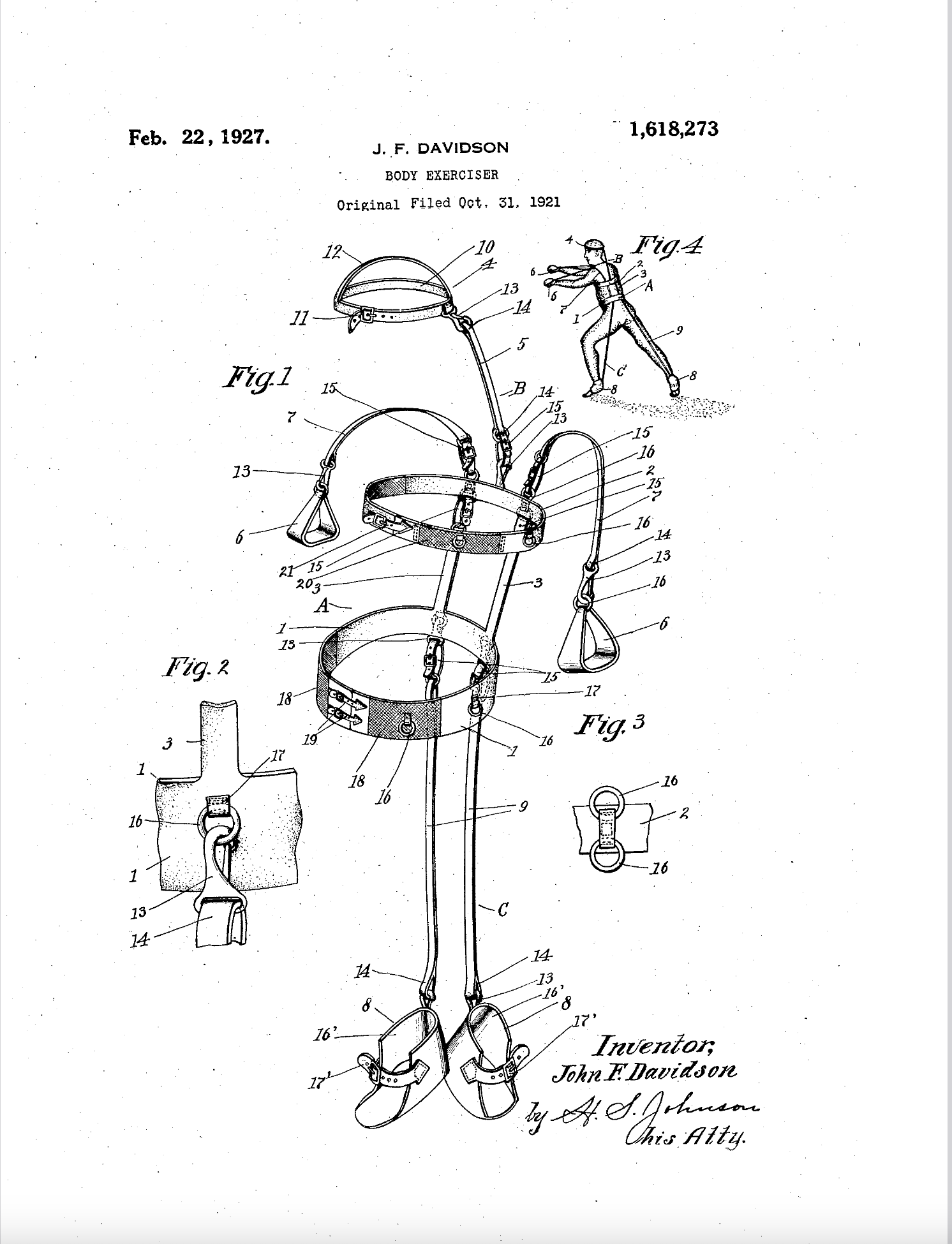
Posted By: Paul - Fri May 12, 2023 -
Comments (0)
Category: Exercise and Fitness, Inventions, Patents, 1920s

| Who We Are |
|---|
| Alex Boese Alex is the creator and curator of the Museum of Hoaxes. He's also the author of various weird, non-fiction, science-themed books such as Elephants on Acid and Psychedelic Apes. Paul Di Filippo Paul has been paid to put weird ideas into fictional form for over thirty years, in his career as a noted science fiction writer. He has recently begun blogging on many curious topics with three fellow writers at The Inferior 4+1. Contact Us |




